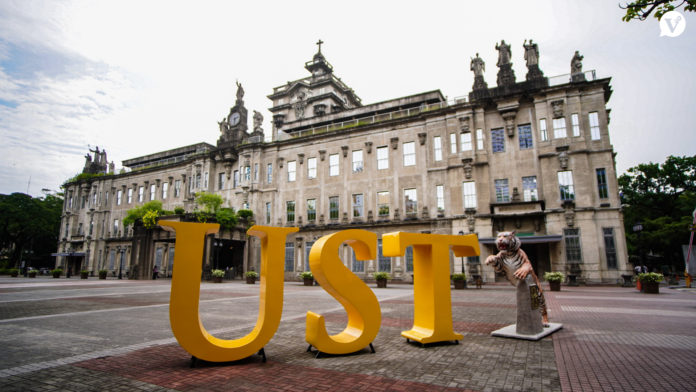THE UNIVERSITY kept its spot as the fourth-best school in the Philippines in the 2024 Quacquarelli-Symonds (QS) Asia University Rankings, where it placed 179th out of 856 universities.
In the latest Asia rankings released by the QS on Oct. 12 (Philippine time), UST fell four spots down from 175th out of 760 universities ranked in 2023.
But UST topped Philippine universities in indicators that assessed schools’ internationalization efforts.
The University placed 11th in Asia in the outbound student exchange indicator and ranked 51st in Asia in terms of inbound student exchange, the sole Philippine university to enter Asia’s top 200 in both criteria.
UST was also the only Philippine university to break into the top 100 of the international faculty indicator, ranking 60th in Asia.
It was the top Philippine university in terms of the proportion of international students, placing 172nd in Asia.
UST tallied an overall score of 28.7 in the latest QS Asia rankings. It scored the following in the 11 indicators:
- 24.2 in academic reputation
- 50.6 in employer reputation
- 17.2 in faculty/student ratio
- 2.6 in international research network
- 1.5 in citations per paper
- 1.9 in papers per faculty
- 1 in proportion of staff with doctorate degrees
- 68.4 in proportion of international faculty
- 26.8 in proportion of international students
- 84.1 in proportion of inbound exchange students
- 100 in proportion of outbound exchange students
A total of 16 Philippine universities earned spots in the 2024 tally, three of which improved from their previous rankings.
The University of the Philippines retained its spot as the top Philippine university, climbing nine spots to 78th from 87th last year.
It was followed by Ateneo de Manila University, which slipped to the 137th spot from 134th, and De La Salle University, which climbed to the 154th spot from 171st last year.
The University of San Carlos (551-600), Polytechnic University of the Philippines (551-600), Far Eastern University, Manila (701-750), and Mindanao State University (801+) entered the QS Asia rankings for the first time.
Philippine universities struggled in research productivity, impact, or collaboration, teaching resources, and faculty expertise in the 2024 rankings, according to Ben Sowter, QS senior vice president.
“Philippine universities have carved out a strong reputation among international employers and display a strong international outlook,” Sowter said in a press release.
“However, if they hope to enhance their academic reputation, focus needs to be placed on employing top-tier faculty and investing in high-quality, relevant research.”
Peking University remained the No. 1 university in Asia, followed by the University of Hong Kong, which climbed to the second spot from fourth in 2023.
The National University of Singapore continued to slip to the third spot from second-best last year. It previously held the top Asian university spot from 2019 to 2022.
The 2024 QS Asia University Rankings had the largest number of schools so far, with 856 institutions from 25 countries and territories making it to the tally.
The QS assessed the performance of participating universities using 11 performance indicators: academic reputation (30 percent), employer reputation (20 percent), faculty/student ratio (10 percent), international research network (10 percent), citations per paper (10 percent), papers per faculty (5 percent), staff with doctorate degrees (5 percent), proportion of international faculty (2.5 percent), proportion of international students (2.5 percent), proportion of inbound exchange students (2.5 percent), and proportion of outbound exchange students (2.5 percent). Ernest Martin G. Tuazon















